Mount Fuji is the symbol of Japan and the tallest mountain in Japan. Discover the charms of Japan’s mountains and read our detailed guide on everything you need to know about climbing Mount Fuji. We also introduce 4 mountains suitable for beginner climbers, and 1 for intermediate to experienced climbers.
Table of Contents
To start with, here is a photo of a sunrise as seen from Mount Fuji taken by a member of our team.

The Charm of Japan’s Mountains
Japan is truly blessed by nature with many mountains, rivers and surrounded by ocean. In this part, we will elaborate about the charms of Japan having so many mountains.
Volcanic Mountains Give Rise to Onsen

Hot springs are closely related to volcanoes. A volcano is a mountain formed when magma from below ground erupts to the surface. Hot springs are created when underground water and gas are heated by the magma’s heat that has risen near the earth’s surface causing the water and gas to gush out.
In volcanic areas, magma is near to the surface which makes it easy for hot springs to boil. Hot springs created by volcanic activity are called volcanic hot springs. In addition to volcanic hot springs, there are also non-volcanic hot springs in Japan.
※ Ministry of the Environment Government of Japan, “温泉の定義”
Different View and Experience at Each Mountain
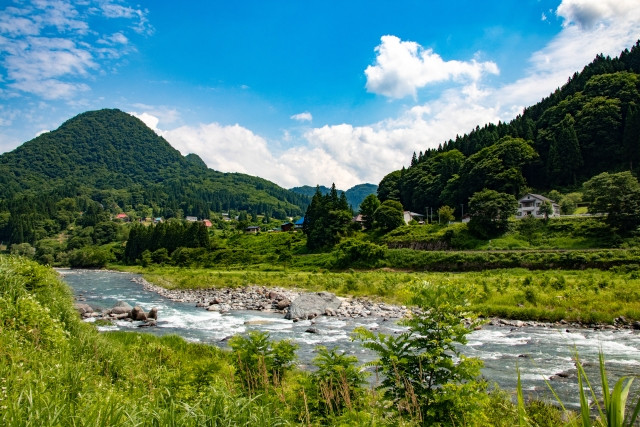
No mountain is the same. Whether it's the atmospheric pressure, temperature, or climate, each mountain is different depending on its location in Japan. Other things that will differ from mountain to mountain are height, size, terrain and most important of all the view. Even the same mountain has a different view depending on where you are upon the mountain. There are mountains that are famous for its view from the peak, mountains that are beautiful when viewed, or both.
Many Activities to Enjoy on Mountains

There are many different ways to enjoy mountains in Japan. For the athletic, there’s hiking, mountain climbing, and winter sports like skiing and snowboarding on mountains where snow piles up. Japan is particularly famous for skiing because of the quality and fineness of its snow. For people who prefer a relaxing trip, there are mountains for enjoying hot springs, panoramic spots reachable by driving, and camping. Moreover, lakes at the base of mountains are quite common, like the Fuji Five Lakes around Mount Fuji. Camping, swimming, boating, fishing are some activities available at lakes.
Writer's Pick
Fujisan is The Symbol of Japan
Mount Fuji, or Fujisan (富士山), is very important to Japan. Since ancient times, it has been an object of worship for many people and many works of art have been created with Mount Fuji as inspiration or the object of focus. Mount Fuji can be enjoyed not just by viewing it but also climbing it with your own feet.
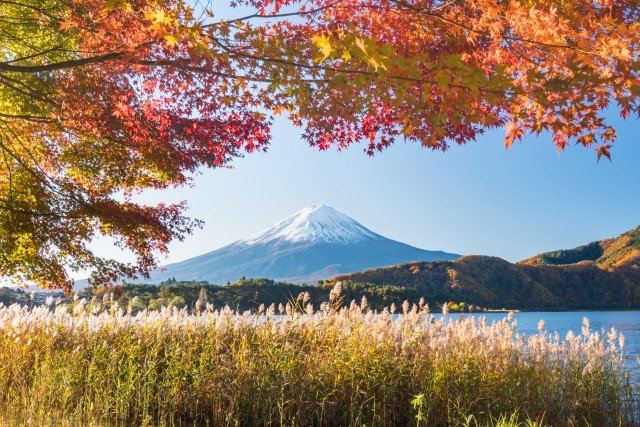
For the latest information about climbing Mount Fuji including weather conditions, climbing status, restrictions, trail conditions, and more: Climb Mount Fuji Official Website
Short Introduction to Mount Fuji
Mount Fuji is located along the borders of Shizuoka and Yamanashi Prefectures on mainland Japan. It is the tallest mountain in Japan with a height of 3,776 metres. Mount Fuji is classified as an active volcano. Though its last eruption was more than 300 years ago on December 16, 1707, disaster preparations and evacuations plans have always been in place in the event an eruption occurs.
The history of Mount Fuji’s making is actually quite interesting. Mount Fuji is actually composed of 3 older volcanoes starting with Mount Komitake and Mount Ashitaka, both measuring around 2,000 meters high and emerging more than 400,000 years ago. Large scale eruptions over many years caused hot lava to combine the 2 mountains into 1 that was known as Ko-Fuji (古富士 old Fuji). The present Mount Fuji we know today is the result of more eruptions after Ko-Fuji was formed.
※ Encyclopædia Britannica, Inc., "Mount Fuji" ※ Shizuoka Prefecture, "Mt.Fuji Nature" ※ Yamanashi Prefecture Tourist Association, "The History of FUJI VOLCANO"
Climbing Mount Fuji, Fujisan’s Four Climbing Trails
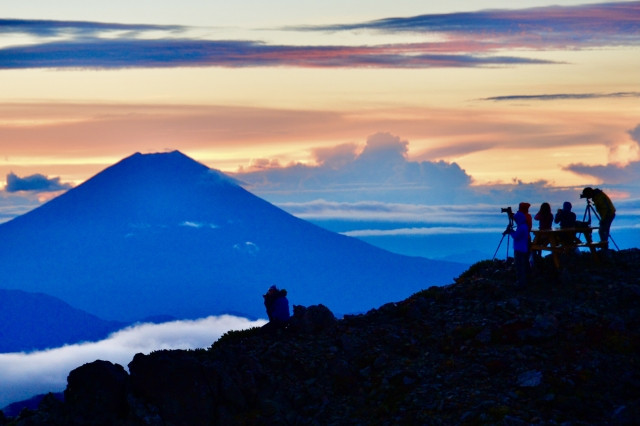
One of the ways to enjoy Mount Fuji is by climbing it. In this part, we will introduce the 4 climbing trails up Mount Fuji.
Forewarning:
-
Each trail has its own starting station or 5th station that can be reached by car. From thereon, access by cars is prohibited.
-
Pay careful attention to your chosen trail’s colour code. Be careful not to mix them up and follow the wrong trail.
-
Learn about the trails in advance and choose one that fits your skills and fitness level.
-
Do not underestimate Mount Fuji - a careless mistake may lead to accidents and inconveniences.
Yellow Trail: Yoshida
The Yoshida Trail, marked by the colour yellow, is the most popular trail. It is recommended for beginner hikers as it is considered the easiest trail. Its starting station is at Fuji Subaru Line 5th Station at Yamanashi Prefecture. Access the starting station via bus from an. Facilities at the starting station include shops, public restrooms, and an information centre.
At around the 8th station, the Yoshida Trail joins up with the Subashiri Red Trail which can make it quite crowded. Estimated total time to reach the top is 6 hours, and 4 hours to fully descend. The Yoshida trail’s terrain is generally flat and winding but the ground becomes rather uneven past the 7th station.
There are mountain huts for overnight accommodation and/or a break along the trail up the mountain, but none on the way down. If emergency assistance is needed, the 5th, 7th and 8th stations have first-aid centres.
Blue Trail: Fujinomiya
The remaining 3 trails, including this one, are on Shizuoka’s side of Mount Fuji. The Fujinomiya Trail, marked by the colour blue, is the second most popular trail after the Yoshida Yellow trail. This trail is difficult to climb because of its rocky terrain and steepness but it is popular because it is the shortest trail. It takes an estimated 5 hours to ascend and 3 hours to descend.
The starting station is Fujinomiya Trail 5th Station accessible via bus from Fujinomiya Station along the JR Minobu Line.
There are many mountain huts along this trail, at every station. There is a first-aid centre on the 8th station if you require assistance.
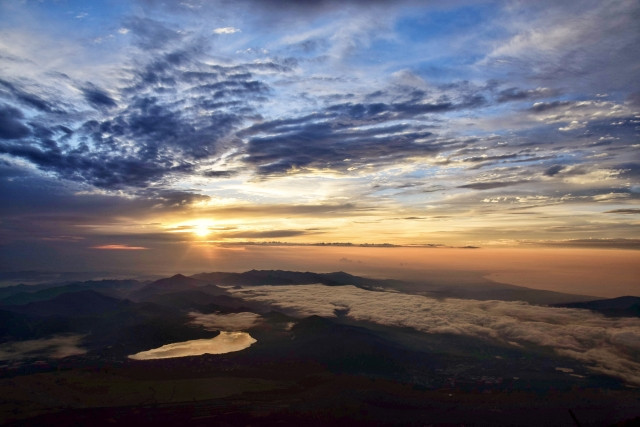
Red Trail: Subashiri
The Subashiri Trail, marked by the colour red, shares the same trail as Yoshida Yellow Trail from the 8th station onwards. The starting station is Subashiri Trail 5th station that is accessible via bus from Shinmatsuda Station and Gotemba Station. Few facilities are available at the trailhead but there are public restrooms.
Estimated time to reach the top is 6 hours, the same as the Yoshida Trail. The descending trail takes less time at an estimated 3 hours because of its gentler terrain.
Mountain huts are available on the ascending trail only. Proceed with caution and bringing a first-aid kit is recommended as there are no first-aid facilities on this trail.
Green Trail: Gotemba
The Gotemba Trail, marked by the colour green, is the least congested trail because it is the longest and most difficult trail meant for experienced hikers. It takes an estimated 7 hours to reach the top but descending takes only around 3 hours. The terrain up till the 8th station consists of volcanic gravel. Other things to beware of are fog and fewer landmarks which comes with the danger of losing your way.
The starting station for Gotemba Trail is Gotemba New Trail 5th Station that is accessible via bus from Gotemba Station. Facilities and mountain huts are limited and no first-aid centres are available along the trail.
※ Official Website for Mt. Fuji Climbing, "Mountain Trails"
Important Things to Know About Climbing Mount Fuji

1. Mount Fuji can only be climbed between July to September which is the climbing season.
2. For climbing at any other time, special permission is required. Check here for more details.
3. Mount Fuji is free to climb. However, do contribute 1,000 yen to the Fujisan Conservation Donation Campaign which will go towards maintenance, facility improvement and conservation of Mount Fuji.
4. Bring at least 10,000 - 30,000 yen in cash for lavatories, replenishing water and food supply, and to stay overnight in a mountain hut (if necessary). Credit cards are not acceptable up there.
5. Many people choose to stay overnight in a mountain hut. Booking in advance is recommended to guarantee a spot.
6. Camping is not allowed on Mount Fuji.
7. Temperature on Mount Fuji during the climbing season is on average below 10°C. At its summit, temperatures are between 5 to 8°C with a chance to drop below 0°C.
8. Weekdays are the best time to avoid crowds. Peak hours are late afternoon and midnight.
9. Sunrise is around 4:30am. Many people start their hike at 10pm or midnight to make it by sunrise. There may be a queue to reach the summit, so don’t schedule your hike too tightly.
10. In case of emergencies, seek help at a mountain hut or first-aid centre. If none are nearby, contact the emergency hotline at 0555-72-1477 for Yoshida Trail, or call 110 (police) / 119 (fire/ambulance) for the other trails.
Enjoying the View of Mount Fuji
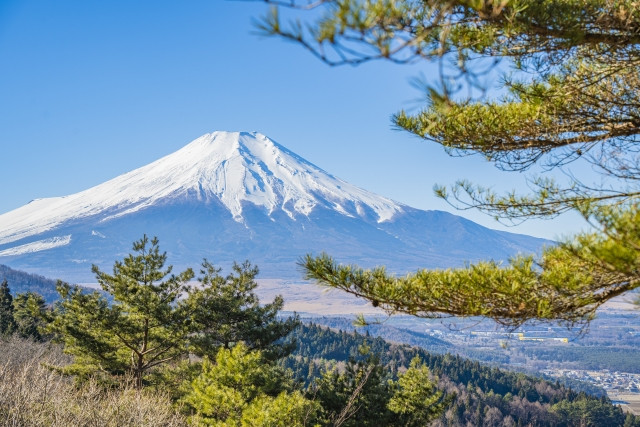
Taking a drive around Mount Fuji, camping at one of the Fuji Five Lakes, visiting prime Mount Fuji photography spot Arakurayama Sengen Park are some of the best ways to get a good view of Mount Fuji. There are also plenty of restaurants and cafes around Yamanashi and Shizuoka Prefecture where you can have Mount Fuji view whilst you enjoy a meal.
For more things to do around Mount Fuji:
Fun Activities Around Mount Fuji and Admiring Fujisan from Afar
5 Mountains to Hike in Japan
In this part, we will introduce other mountains in Japan where you can enjoy hiking.
Mount Takao 高尾山 (Tokyo)
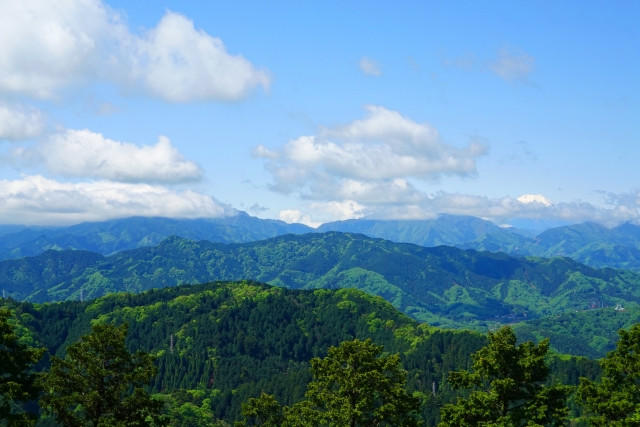
View from Mount Takao
Mount Takao is located in Hachioji City, Tokyo. It is one of the most popular hiking spots in the Kanto region. Many people visit Mount Takao for a daytrip. If you don’t want to hike all the way to the top, there’s a cable car service that can bring you halfway up the mountain. Other things to do on Mount Tako include visiting the Monkey Park & Wild Plant Garden, Yakuoin Shinto-Buddhist temple, Takao 599 Museum about nature, and a hot spring bathhouse.
Takaosan Railway Official Website
Mount Mitake 御岳山 (Tokyo)
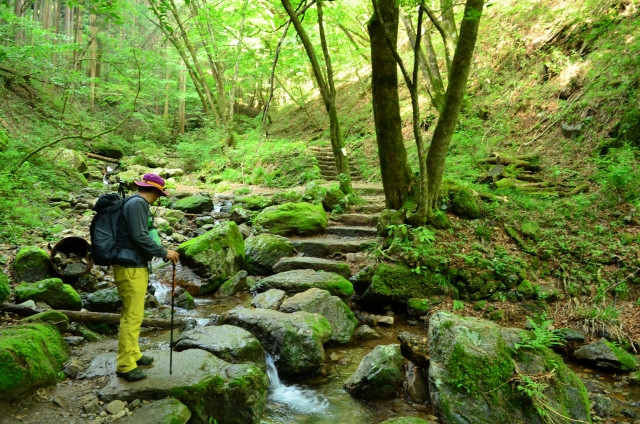
Mount Mitake is part of Chichibu-Tama-Kai National Park that spreads across Saitama, Yamanashi, Nagano and Tokyo prefectures. Mount Mitake is located in Ome City, Tokyo. Just like Mount Takao, there is also a cable car service that brings you halfway up the mountain. Aside from being a great place to enjoy nature, Mount Mitake is also renowned for mountain worship and has many spiritual power spots. There are various nature trails available, the most famous being the Rock Garden trail.
Mount Asahi 旭岳 (Hokkaido)
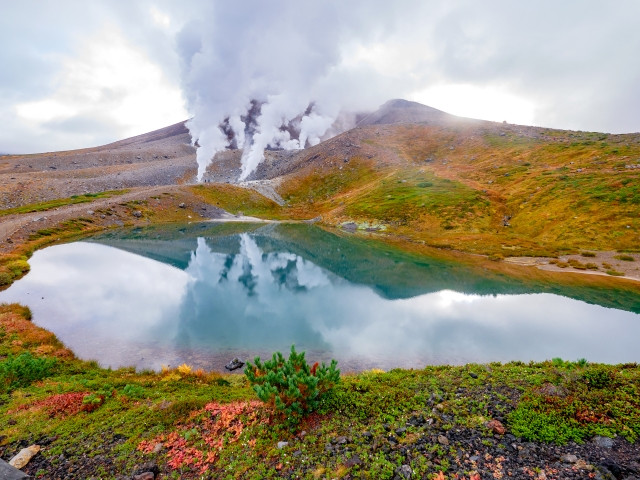
Mount Asahi, known as Asahi-dake in Japanese, is the tallest mountain in Hokkaido. It is located in Higashikawa Town and can be reached from Asahikawa Station. The mountain is open for hiking in summer and autumn months where it is visited by many people, especially in September when autumn foliage sets in. In winter, the mountain is covered in snow and skiing, snowboarding and other winter sports become available. After taking the ropeway up the mountain, it is a fairly short and easy hike of around 1 hour.
Asahidake Daisetsuzan Official Website
Mount Norikura 乗鞍岳 (Nagano, Gifu)
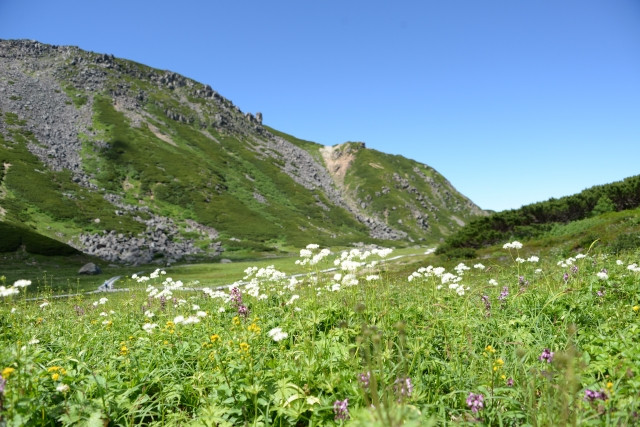
Mount Norikura is a 3,000 metres tall mountain. For such a tall mountain, it is surprisingly easy to climb even for beginners. It is a popular spot for day trip hikers. There are a total of 5 hiking trails on Mount Norikura that brings you to a different destination, each with its own charms, check here. The most difficult trail is Mount Kengamine because of its rocky path, but it will bring you to Mount Norikura’s peak.
Mount Norikura Official Website
Mount Tate/Tateyama 立山 (Toyama, Nagano)
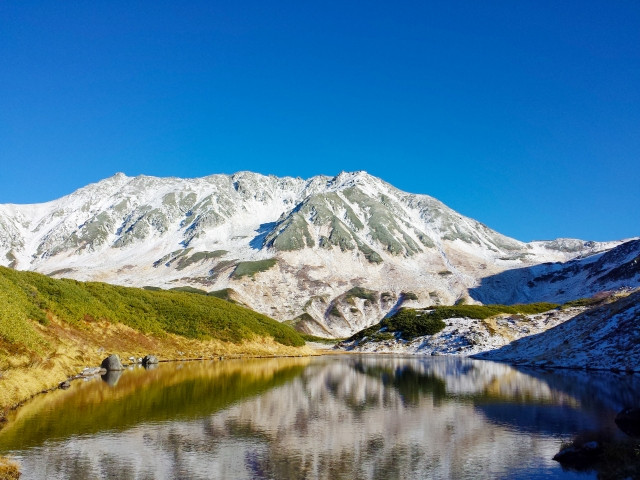
Tateyama is located in Toyama Prefecture. It is only open for hiking in summer and autumn. Many people climb Mount Tate in fall to enjoy the autumn foliage. Though the first half of Mount Tate is fairly easy to climb, the later half becomes much more difficult with rocky steep slopes. Mount Tate is recommended for intermediate to expert climbers only as it is a difficult climb.
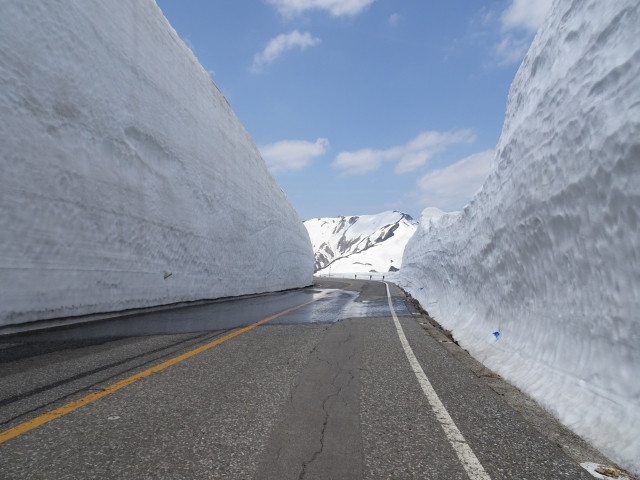
Mount Tate is part of the Tateyama Kurobe Alpine Route, a sightseeing mountain route. There are other mountains along the route that you can climb like Mount Murodo and Mount Jodo. Other highlights of the route include Kurobe Dam and several metres tall snow walls in winter.
Tateyama Kurobe Alpine Route Official Website
For other mountains in Japan, read:
Exploring the Mountains of Japan
Takeaway
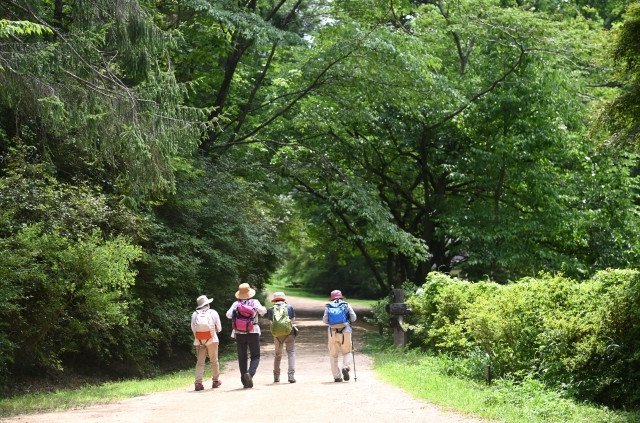
Climbing mountains and hiking in Japan is a great physical activity. Not only is it good for your health, but it also helps clear your mind of accumulated stress, plus the beautiful panoramic sights make you feel good and refreshed. Why not give hiking a try with Mount Fuji and our other 5 mountain recommendations?
The important thing to remember about hiking or any sport activity is to do your research and make the necessary preparations beforehand. Know your physical limits and do not overdo it. It’s fine to push yourself a little but the end goal is to have fun and stay safe.








 (2).png)
.jpg)





















